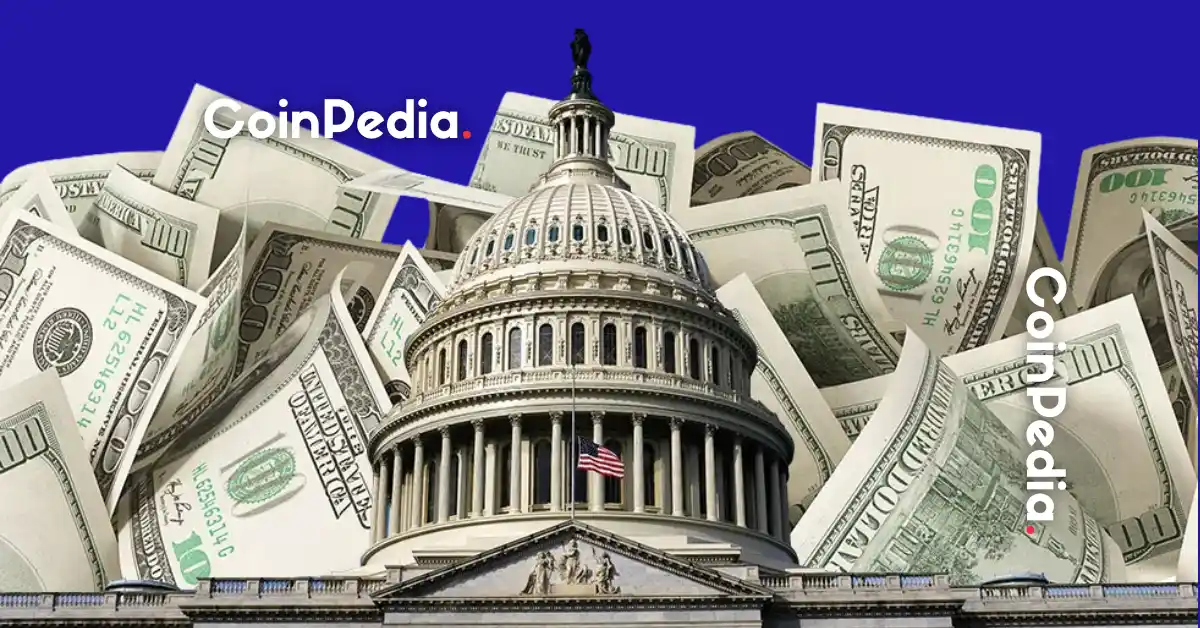
As America’s national debt climbs past $37 trillion, concerns are growing about the country’s financial future. Just ten years ago, the debt stood at $18 trillion. Now, it has more than doubled, raising serious worries about inflation, currency devaluation, and the long-term stability of the economy.
Meanwhile, some experts believe Bitcoin and even stablecoins might offer some real solutions.
Let’s see how!
The U.S debt is growing by about $4.27 billion every day, and it has reached $37 trillion so far. If nothing changes, experts warn that interest payments alone could swallow up the entire budget, leaving little for things like Social Security, defense, or public services.
Recently, Elon Musk on X said the U.S. is on the edge of “de facto bankruptcy,” with interest payments alone eating up 25% of government revenue.
Meanwhile, economist Peter Schiff went a step further, claiming the U.S. is already bankrupt—it’s just not obvious yet.
Analysts are now calling Bitcoin a protective asset, especially as each U.S. citizen indirectly holds over $106,000 in national debt. That number shoots up to $323,000 per taxpayer. With a federal deficit of $2 trillion and spending of $7.1 trillion.
However, over the past decade, when U.S debt doubled down, Bitcoin price has jumped from under $500 to more than $111,000. For many, this isn’t just a price chart; it’s proof that Bitcoin is becoming a financial lifeline.
Raoul Pal, founder of Real Vision, compared Bitcoin to a “life raft” in these uncertain times. As central banks print more money, Bitcoin’s fixed supply becomes even more attractive. Pal believes Bitcoin not only protects against inflation but also grows in value as more people adopt it.
While Bitcoin acts as a hedge, stablecoins may play a different role — one that could help reduce the debt itself.
U.S. Treasury Secretary Scott Bessent recently suggested that Stablecoins are backed by U.S. Treasury bonds. As the stablecoin market grows, so will the demand for these bonds, possibly lowering government borrowing costs.
The GENIUS Act, which aims to regulate stablecoins and mandate Treasury bond holdings, has passed the Senate and awaits a House vote.
However, America’s growing debt is forcing everyone governments, investors, and everyday people to look for new solutions.
The escalating U.S. national debt is driven by consistent budget deficits, where government spending exceeds revenue. Factors include increased spending on social programs, defense, infrastructure, and tax cuts, often without corresponding revenue increases.
A high national debt can contribute to inflation through several mechanisms. Increased government borrowing can lead to more money printing, directly increasing the money supply. It also adds to aggregate demand and can raise inflation expectations, ultimately putting upward pressure on prices.
While the U.S. dollar currently maintains its reserve currency status, persistently high debt levels can erode investor confidence. This could lead to a decreased demand for U.S. Treasury bonds and the dollar, potentially causing currency devaluation, which means your money buys less internationally.
CoinPedia has been delivering accurate and timely cryptocurrency and blockchain updates since 2017. All content is created by our expert panel of analysts and journalists, following strict Editorial Guidelines based on E-E-A-T (Experience, Expertise, Authoritativeness, Trustworthiness). Every article is fact-checked against reputable sources to ensure accuracy, transparency, and reliability. Our review policy guarantees unbiased evaluations when recommending exchanges, platforms, or tools. We strive to provide timely updates about everything crypto & blockchain, right from startups to industry majors.
All opinions and insights shared represent the author's own views on current market conditions. Please do your own research before making investment decisions. Neither the writer nor the publication assumes responsibility for your financial choices.
Sponsored content and affiliate links may appear on our site. Advertisements are marked clearly, and our editorial content remains entirely independent from our ad partners.
The crypto market opened 2026 with a strong bullish push, lifting Solana (SOL) above $143.…
Shiba Inu news has taken a familiar turn this week. SHIB’s recent 4.5% wobble wasn’t…
Chainlink has continued to be one of the prominent names within the cryptocurrency space, with…
Investors seeking the best crypto to buy now are moving beyond Shiba Inu (SHIB), whose…
Story Highlights The live price of Filecoin crypto is Price predictions for 2026 range from…
Vitalik Buterin just gave Bitcoin maximalists something they rarely get from the Ethereum camp: credit.…